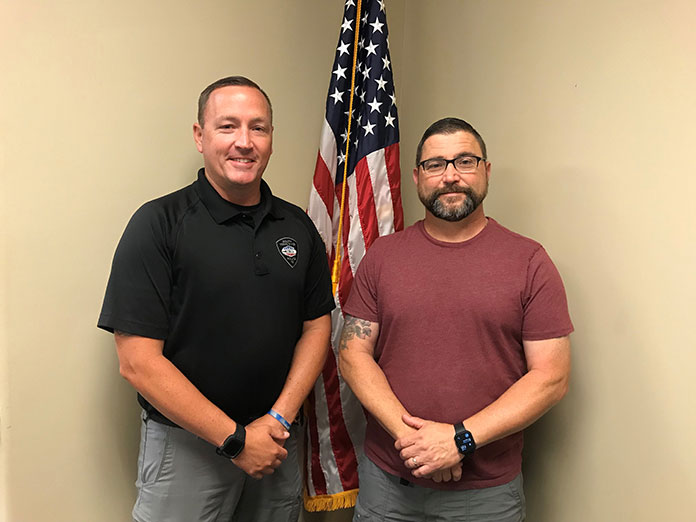
SOUTH TOMS RIVER – The leadership of the South Toms River Police Department was handed off recently, but the goal of community policing has not changed.
Retired Chief William Kosh and new Chief Michael Schneidt sat down with The Berkeley Times to talk about the transition and what borough residents can expect.
Kosh said he’s been focusing on spending time with his family while taking some security work on the side.
“Law enforcement is a passion of mine, but because we have the right people in place, it made it a good time to step down,” he said.
Schneidt said that they had prepared for the transition for some time. “Whether I knew it or not, he’s been preparing me for it for three years.”
Communication is key, Kosh said, when it came to community policing. This means bridging the gap between schools, neighborhood watches and more. It means contacting all the people who have a vested interest in the small town and finding out what their concerns are.
Schneidt said they constantly working on making police officers more approachable. Having an officer in the schools is imperative, because it provides a positive role model during the years when kids are faced with a lot of choices.
When asked whether the retail cannabis shop has impacted crime in the area, Kosh said that it has brought more traffic to town, but they’ve had zero security issues. It does not impact the community as much as, say, alcohol.
Kosh said he was proud of a number of things during his tenure, such as accreditation by the New Jersey State Association of Chiefs of Police, which is a painstaking process to prove that the department is following the best practices in law enforcement. Also during his time leading the department he established the K-9 program.
An employee assistance program was started in which any borough worker – not just in the police department – has crisis intervention available. On Point social workers are also available one day a week to meet the needs of residents and the community in areas such as substance abuse or homelessness.
Referrals would be made, if needed, and the police could make follow-up calls to make sure people are all right, Schneidt said. “People appreciate that someone is listening and cares.”
In relation to that, it’s important for officers to continue community policing, getting out of the cars and talking to residents. “People will remember positive interactions,” he said.







